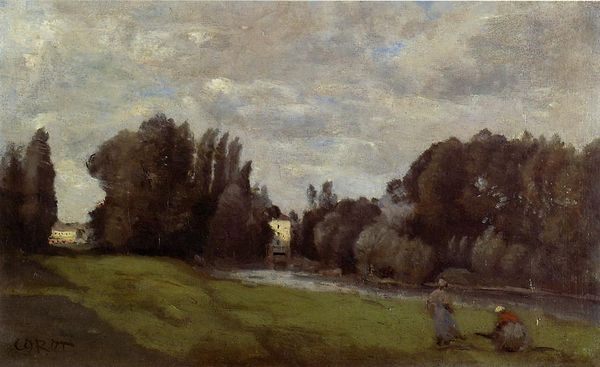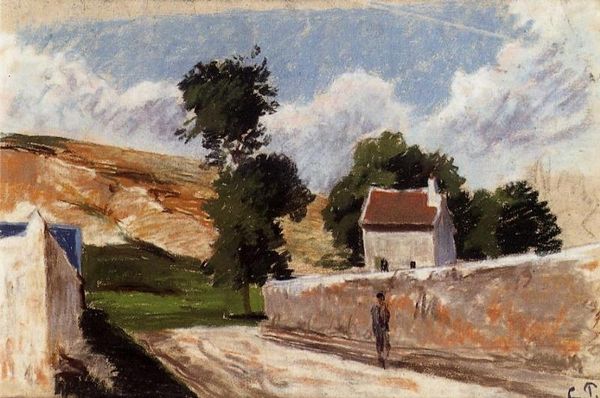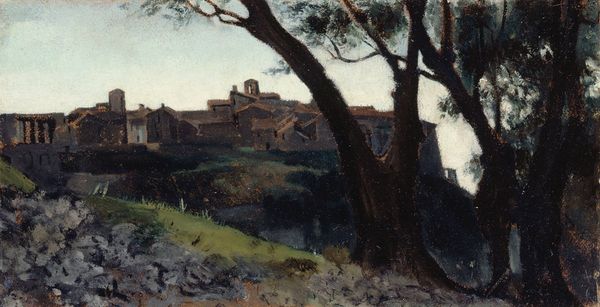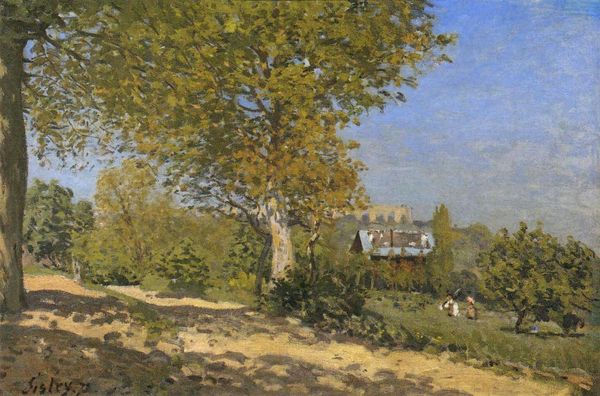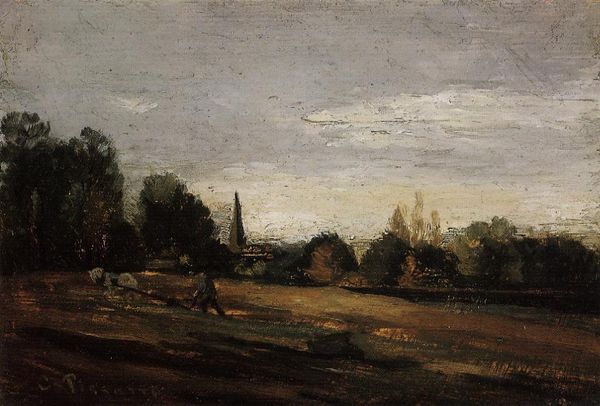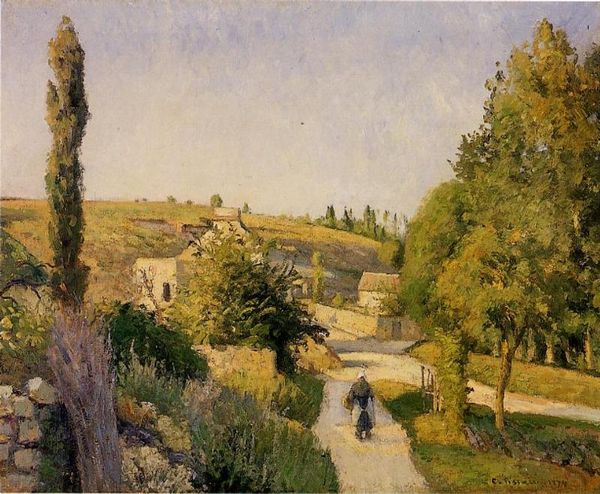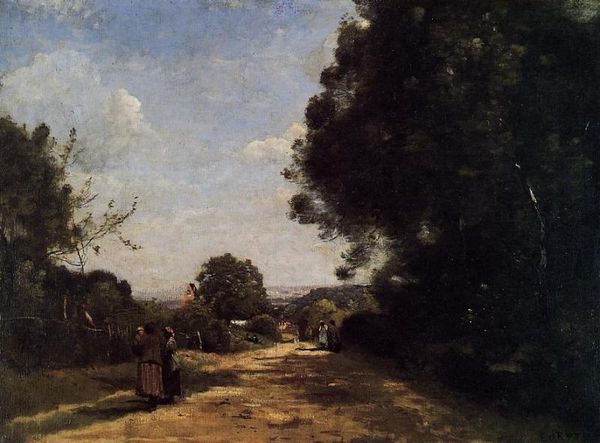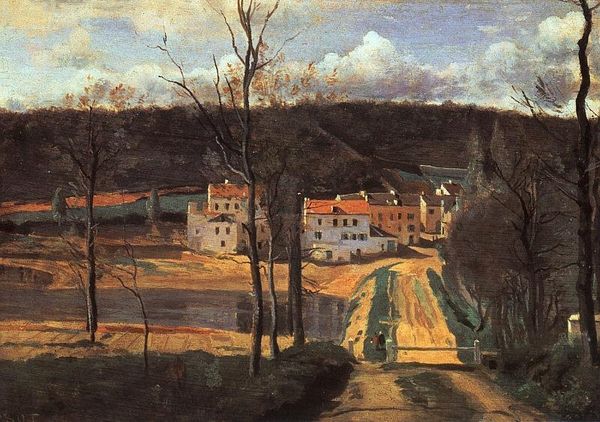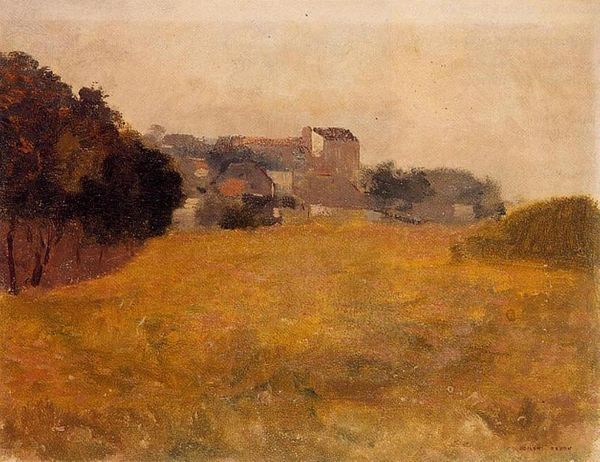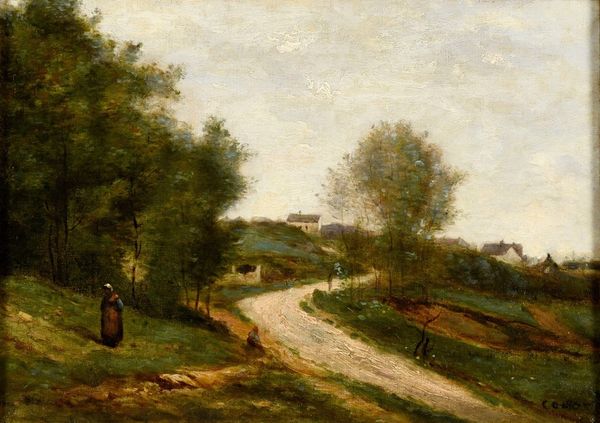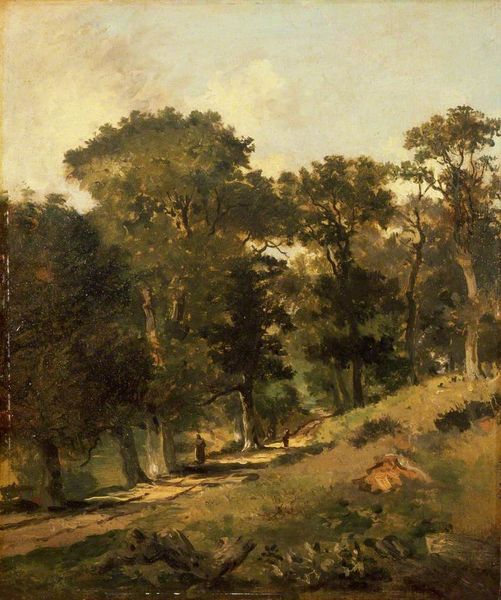
A Seated Italian from Paeigno Facing Front 1828
0:00
0:00
jeanbaptistecamillecorot
Ashmolean Museum, Oxford, UK
painting, plein-air, oil-paint
#
painting
#
plein-air
#
oil-paint
#
landscape
#
oil painting
#
romanticism
#
realism
Copyright: Public domain
Curator: This is "A Seated Italian from Paeigno Facing Front," painted by Camille Corot in 1828. Corot worked en plein air, and this particular oil painting is currently held in the Ashmolean Museum in Oxford. Editor: Immediately, I’m struck by the composition and how it directs your eye through the scene. The road acts as a leading line to the distant houses. It evokes a sense of tranquility and rustic charm. Curator: Corot's process of plein air painting speaks to broader artistic movements happening at that time. It demonstrates a move toward direct observation and away from academic studio practice. What interests me is how painting outdoors was impacting material choices. We see oil paints that could be carried easily to capture the changing effects of light. Editor: Indeed. Looking closer, consider that this 'simple' landscape isn't detached from socio-political elements either. How might this depiction of Italian peasants connect to the era's interest in romanticizing the rural, perhaps idealizing lives untouched by the industrialized, increasingly class-stratified urban centres? Who profits, then, from such picturesque imagery? Curator: That romanticism is certainly on display. His use of relatively subdued earth tones gives the scene a very tactile quality. Notice how he balances areas of detail, such as in the leaves of the large tree on the right, with more broadly rendered forms like the sky and distant fields. The paint handling and the build up of these distinct passages become really apparent the more one looks. Editor: That’s true. Beyond that, it does spark interesting conversations regarding art historical representation of class and identity, particularly when viewed through a modern lens. Whose story isn't told here? Who does it represent, and who does it serve? Curator: Precisely! Focusing on material realities can lead to critical analysis. Corot’s landscape reflects particular circumstances shaped by emerging market forces, consumption patterns and more. It brings us much closer to a clearer picture of the forces that shaped the artwork, far removed from the artist's "genius." Editor: Reflecting on Corot’s creation opens up wider conversations about land ownership, power dynamics, and artistic production within distinct social fabrics.
Comments
No comments
Be the first to comment and join the conversation on the ultimate creative platform.
